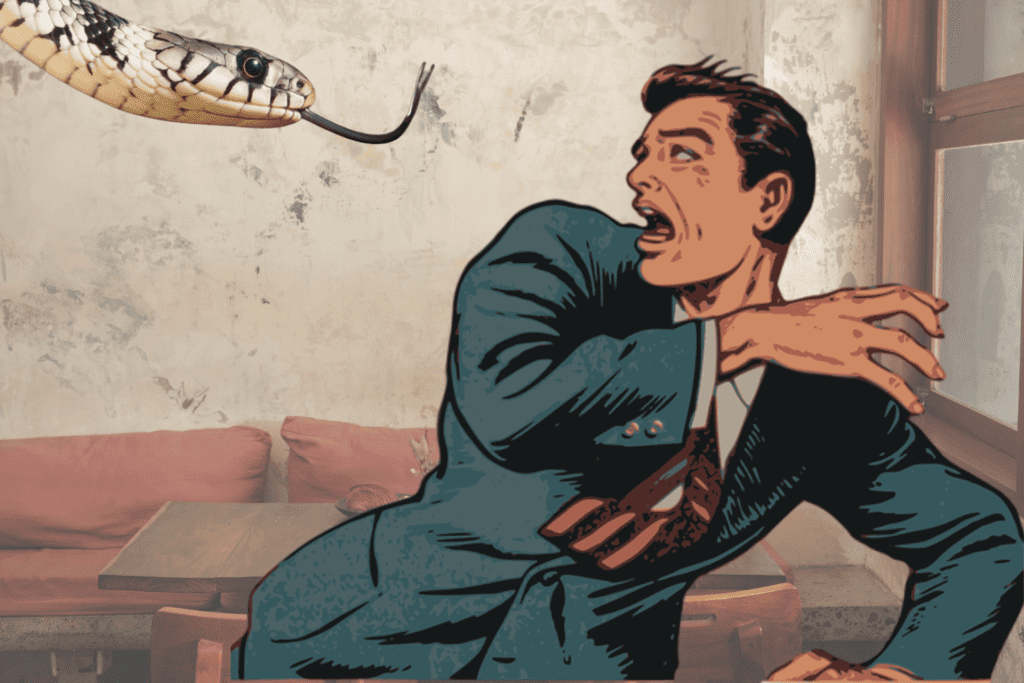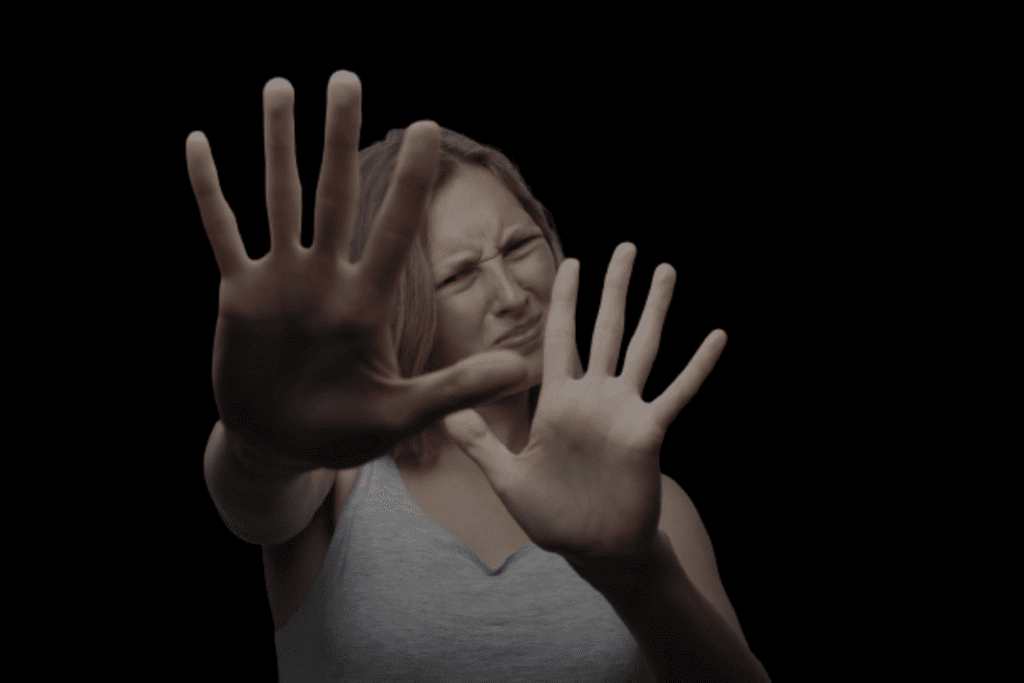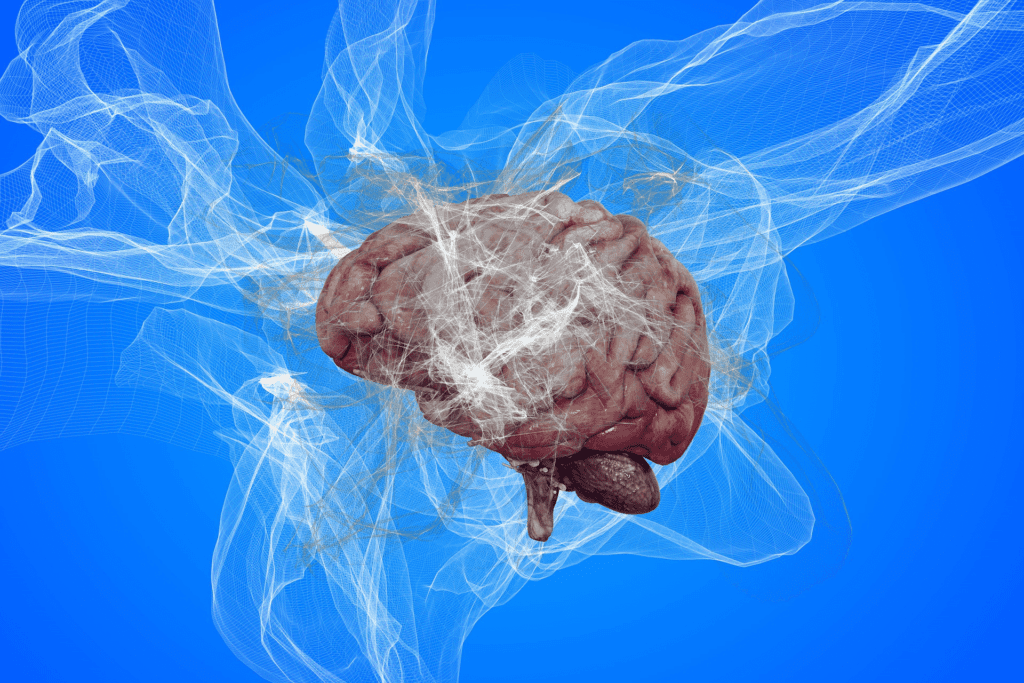Fear is a basic human emotion triggered by a perceived threat, whether real or imagined. It is a complex and multifaceted experience that involves both physical and emotional responses. Fear is often associated with anxiety, apprehension, and unease, and can manifest in various ways, including a racing heart, heightened senses, sweating, and feelings of dread.
Table of Contents
ToggleFear has evolutionary roots, serving as a survival mechanism that helped our ancestors identify and respond to danger. While fear can be overwhelming and paralyzing, it can also serve as a powerful motivator for personal growth and development. Understanding and overcoming our fears is an empowering journey that requires self-reflection, resilience, and a willingness to take action.

Types of fear
Fear is a complex and multifaceted emotion that can manifest in many different ways. Here are some of the most common types of fears that individuals may experience:
Specific Phobias
Specific phobias involve an intense and irrational fear of a particular object, situation, or activity. Common examples include fear of heights (acrophobia), spiders (arachnophobia), fear of snakes (Ophidiophobia), flying (aviophobia), or enclosed spaces (claustrophobia). These fears can cause significant distress and may lead individuals to avoid the feared stimuli altogether.

Social Anxiety
Social anxiety, or social phobia, revolves around the fear of being judged, embarrassed, or humiliated in social situations. Individuals with social anxiety may fear public speaking, social gatherings, or any situation where they feel they are being observed or evaluated. This fear can severely impact a person’s social interactions and overall quality of life.
Fear of Failure
The fear of failure is a common psychological fear that inhibits individuals from taking risks or pursuing their goals. It involves a deep-rooted anxiety about not meeting expectations, making mistakes, or falling short of one’s own or others’ standards. Fear of failure can lead to procrastination, self-doubt, and missed opportunities for personal and professional growth.
Fear of Rejection
The fear of rejection centers around the apprehension of being rejected, excluded, or abandoned by others. It often stems from a fear of not being accepted or liked, leading individuals to avoid social interactions or hold back from expressing themselves authentically. This fear can impede the formation of meaningful relationships and hinder personal connections.
Existential Fear
Existential fears encompass a broad range of concerns related to the nature of existence, mortality, and the meaning of life. Fear of death, the fear of meaninglessness, or the fear of the unknown fall under this category. These fears can provoke deep contemplation and existential crises, prompting individuals to question their purpose and seek meaning in their lives.
Fear of Change
The fear of change manifests as apprehension or resistance toward new or unfamiliar situations. It stems from the uncertainty and potential disruptions that accompany change. People with this fear may prefer stability and predictability, often avoiding opportunities for growth or transformation due to the perceived risks involved.
Fear of Uncertainty
Fear of uncertainty revolves around the discomfort and anxiety that arises from unpredictable or ambiguous situations. This fear can manifest as a need for control or a constant desire for reassurance and certainty. It can limit individuals from embracing uncertainty as a natural part of life and hinder them from taking necessary risks.
Fear of Success
While less commonly discussed, the fear of success is an intriguing fear that individuals may experience. It involves a fear of the responsibilities, expectations, or changes that accompany success. This fear can undermine self-confidence and sabotage efforts toward achieving one’s goals.
Agoraphobia
Agoraphobia is characterized by an intense fear of being in situations or places from which escape may be difficult or embarrassing. People with agoraphobia often fear being in crowded areas, open spaces, or places where they feel trapped. This fear can lead to avoiding certain environments and can be severely limiting.
Fear of Public Speaking
Glossophobia, or the fear of public speaking, is a widespread fear affecting many individuals. It involves anxiety and fear surrounding speaking in front of a group or an audience. The fear can stem from concerns about being judged, making mistakes, or being unable to effectively communicate.
Fear of the Unknown
Fear of the unknown is a broad fear that encompasses uncertainties, ambiguous situations, and unpredictable outcomes. It can manifest as anxiety or apprehension about venturing into new territories, taking risks, or confronting unfamiliar circumstances.
Fear of Abandonment
The fear of abandonment revolves around the worry of being rejected, neglected, or left alone by loved ones or significant others. It often stems from past experiences of loss, trauma, or insecurity, and can lead to clingy behavior, avoidance of close relationships, or difficulties with trust.
Fear of Confrontation
The fear of confrontation involves an aversion to conflict or disagreements. Individuals with this fear may avoid expressing their opinions, setting boundaries, or addressing issues directly due to a fear of negative reactions, rejection, or damaging relationships.
Fear of Intimacy
The fear of intimacy refers to the fear of emotional closeness, vulnerability, or deep emotional connections with others. This fear can result from past hurts, fear of rejection, or a lack of trust. It can manifest as difficulties in forming or maintaining intimate relationships.
Fear of Judgment
The fear of judgment involves a constant concern about what others think or say about oneself. This fear can lead to self-consciousness, a fear of criticism, and a reluctance to express oneself authentically. It can limit personal freedom and inhibit individuality.
Fear of the Supernatural
Some individuals have specific fears related to supernatural or paranormal phenomena, such as ghosts, demons, or supernatural occurrences. These fears can be influenced by cultural beliefs, religious backgrounds, or personal experiences.
It’s important to note that everyone’s experiences with fear are unique, and individuals may experience a combination of different fears. Understanding and addressing these fears can support personal growth, improve well-being, and empower individuals to lead more fulfilling lives.
Symptoms of Fear
When experiencing fear, individuals may exhibit a range of physical, emotional, cognitive, and behavioral symptoms. These symptoms can vary in intensity depending on the person and the specific fear they are facing. Here are some common symptoms associated with fear:
Physical Symptoms
- Increased heart rate and palpitations
- Rapid or shallow breathing
- Sweating and clammy hands
- Trembling or shaking
- Feeling dizzy or lightheaded
- Muscle tension or tightness
- Nausea or stomach discomfort
- Headaches or migraines
- Increased blood pressure
- Dry mouth or throat

Emotional Symptoms
- Anxiety and restlessness
- Experiencing a profound sense of being overwhelmed or an impending feeling of doom.
- Irritability or mood swings
- Intense worry or fearfulness
- Feeling tense or on edge
- Feeling out of control
- Panic attacks (rapid onset of intense fear accompanied by physical symptoms)
Cognitive Symptoms
- Racing or intrusive thoughts
- Difficulty concentrating or focusing
- Negative or catastrophic thinking
- Heightened vigilance and hypervigilance (being overly alert to potential threats)
- Distorted perception of danger or risk
- Memory difficulties or forgetfulness
Behavioral Symptoms
- Avoidance behaviors (trying to escape or avoid the source of fear)
- Seeking reassurance or support from others
- Crying or displaying signs of distress
- Freezing or becoming paralyzed by fear
- Restlessness or pacing
- Difficulty sleeping or experiencing nightmares
- Experiencing a diminished appetite or engaging in excessive eating as a coping mechanism.
It’s important to note that these symptoms can be a normal response to fear and may subside once the perceived threat or fear-inducing stimulus is no longer present. However, if these symptoms persist or significantly interfere with daily functioning, it may be indicative of an anxiety disorder and professional help should be sought.
Each person may experience fear differently, and the intensity and duration of symptoms can vary. Understanding and recognizing these symptoms can help individuals identify when fear is becoming overwhelming and take appropriate steps to manage and address it effectively.
Causes of Fear
Fear can arise from a variety of causes, and it can be influenced by individual experiences, learned behaviors, and biological factors. Outlined below are several typical reasons that can lead to fear:

Traumatic Events
Direct exposure to or witnessing traumatic events, such as accidents, violence, natural disasters, or personal harm, can lead to fear. The memory and associated emotions from these events can create a conditioned response, causing fear in similar situations or triggers.
Learned Behavior
Fear can be learned through observation or conditioning. If individuals observe others expressing fear or have negative experiences in specific situations, they may develop a fear response as a result. For example, if someone witnesses a loved one’s fear of dogs, they may adopt the fear themselves.
Biological Factors
Some fears may have a biological basis. The amygdala, a part of the brain involved in emotional processing, plays a significant role in fear responses. Genetic factors and brain chemistry can contribute to a predisposition for certain fears or anxiety disorders.
Cultural and Social Factors
Cultural and societal influences can shape fears. Cultural beliefs, social norms, and shared experiences within a community can influence the development of specific fears or phobias. For instance, cultural folklore or media portrayal of certain creatures or situations can instill fear in individuals.
Childhood Experiences
Early experiences and upbringing can shape an individual’s fears. Traumatic events, neglect, or overprotective parenting can contribute to the development of specific fears or anxieties in adulthood. Childhood experiences also play a role in shaping beliefs and perceptions related to fear.
Personal Loss or Rejection
Loss of a loved one, significant relationship breakup, or experiences of rejection can trigger fear responses. The fear of losing someone or being rejected again can lead to emotional distress and fear of forming new relationships.
Cognitive Factors
Thoughts and beliefs can contribute to the development or intensification of fear. Negative thinking patterns, irrational beliefs, catastrophic thinking, or excessive worry can fuel fear and anxiety. For example, someone with a fear of flying may catastrophize and believe that the plane will crash.
Media Influence
Exposure to media, including news, movies, or social media, can contribute to the development of fears. Graphic or sensationalized portrayals of violence, disasters, or phobias can create anxiety and fear in individuals who perceive these situations as personal threats.
Genetics
Research suggests that some individuals may be more predisposed to developing anxiety or fear due to genetic factors that affect brain chemistry.
Phobias
Specific phobias are intense and irrational fears of certain objects or situations, such as spiders, heights, or enclosed spaces, and are often rooted in previous negative experiences or traumatic events.
Uncertainty
Fear of the unknown or uncertainty about the future can lead to anxiety and apprehension.
Medical Conditions
Certain medical conditions, such as panic disorder, post-traumatic stress disorder, or generalized anxiety disorder, can cause persistent and intense fear.
Threat or Danger
Fear is often triggered by the perception or anticipation of a threat or danger. This can include physical threats, such as facing a dangerous animal or being in a life-threatening situation, as well as psychological threats, such as the fear of failure or rejection.
Conditioning and Learning
Fear can be learned through classical conditioning, where a neutral stimulus becomes associated with a negative experience or fear-inducing event. Over time, the neutral stimulus alone can elicit fear. Additionally, fear can be learned through observational learning, where individuals acquire fears by observing others’ fearful reactions or through information received from trusted sources.
Personality Traits
Certain personality traits, such as neuroticism or a tendency towards negative emotions, can contribute to the experience of fear. Individuals with these traits may be more prone to anxiety and fear responses in general.
It’s important to recognize that fear can be a normal and adaptive response to protect ourselves from harm. However, when fear becomes excessive, irrational, or interferes with daily functioning, it may be necessary to seek professional help to address and manage these fears effectively.
Treatment of Fear
The treatment of fear depends on the severity of the fear and its impact on an individual’s daily life. Here are some common approaches and therapies used to address and manage fear:

Psychoeducation
Understanding the nature of fear, its causes, and its impact can be an essential first step in treatment. Psychoeducation helps individuals gain knowledge about their specific fear, learn coping strategies, and develop a sense of control over their fear response.
Cognitive-Behavioral Therapy (CBT)
CBT is a widely used therapeutic approach for treating fear and anxiety disorders. It focuses on identifying and challenging negative thoughts, beliefs, and patterns of behavior that contribute to fear. Through cognitive restructuring and exposure techniques, individuals can learn to reframe their thoughts, face their fears gradually, and develop healthier coping mechanisms.
Exposure Therapy
Exposure therapy is a specific technique used to address phobias and specific fears. It involves gradual and controlled exposure to the feared stimulus or situation, allowing individuals to confront their fear in a safe and supportive environment. Over time, repeated exposure helps reduce the fear response and allows for habituation and desensitization.
Relaxation Techniques
Learning and practicing relaxation techniques, such as deep breathing, progressive muscle relaxation, or mindfulness meditation, can help individuals manage anxiety and fear. These techniques promote relaxation and reduce physical and emotional symptoms associated with fear.
Medication
In some cases, medication may be prescribed to manage fear and anxiety symptoms. Antidepressants or anti-anxiety medications, such as selective serotonin reuptake inhibitors (SSRIs) or benzodiazepines, may be used in conjunction with therapy to alleviate symptoms. It’s important to consult with a healthcare professional to determine the appropriateness and potential side effects of medication.
Support Groups
Participating in support groups or group therapy sessions with individuals facing similar fears can provide a sense of community, understanding, and encouragement. Sharing experiences and learning from others can be empowering and help individuals feel less alone in their journey.
Mindfulness-Based Stress Reduction (MBSR)
MBSR incorporates mindfulness meditation, yoga, and mind-body awareness techniques to reduce stress and promote emotional well-being. It can be beneficial in managing fear by cultivating present-moment awareness and developing skills for emotional regulation.
Eye Movement Desensitization and Reprocessing (EMDR)
EMDR is a specialized therapy often used to treat post-traumatic stress disorder (PTSD) and fears stemming from traumatic experiences. It involves bilateral stimulation, such as eye movements or tapping, while processing distressing memories or thoughts, allowing for their reintegration and resolution.
Conclusion
Fear, while a natural response, can become debilitating when it interferes with daily life. Understanding the different types of fear, recognizing their symptoms, identifying underlying causes, and seeking appropriate treatment can help individuals regain control over their lives. With the right support and resources, it is possible to confront and overcome fear, leading to improved mental and emotional well-being. Remember, seeking professional help is essential for an accurate diagnosis and personalized treatment plan.
Resources
Image Designed by Freepik
References
https://en.wikipedia.org/wiki/Fear
https://www.webmd.com/mental-health/signs-of-fear
https://www.ncbi.nlm.nih.gov/pmc/articles/PMC3595162/
https://www.goodtherapy.org/learn-about-therapy/issues/fear/overcomel




